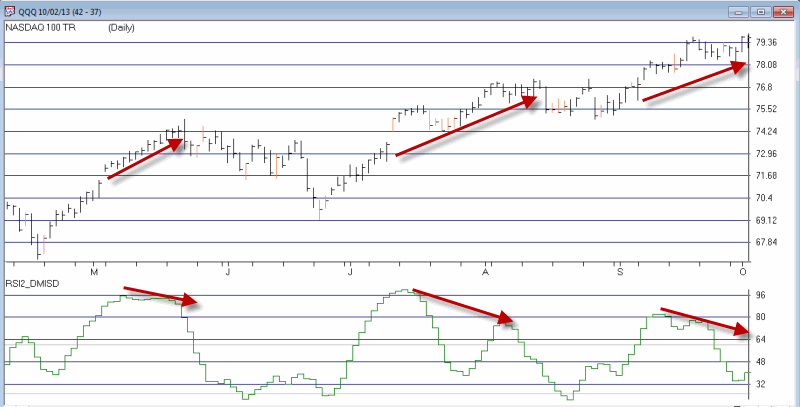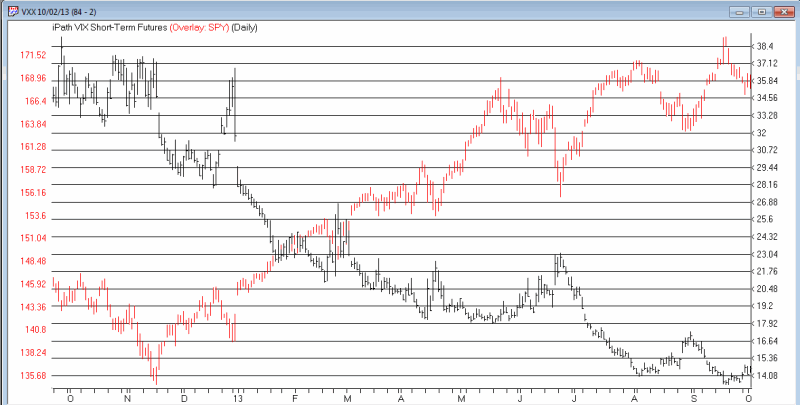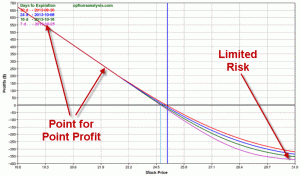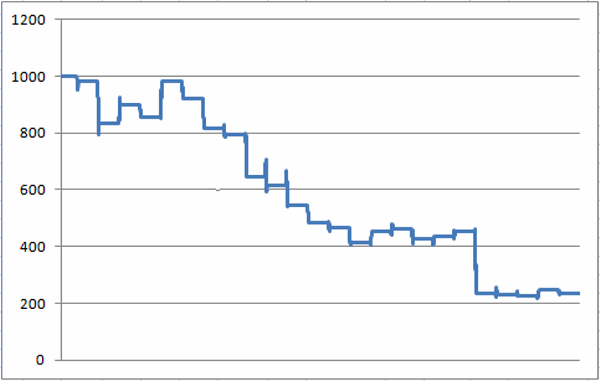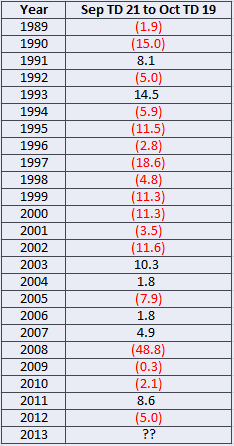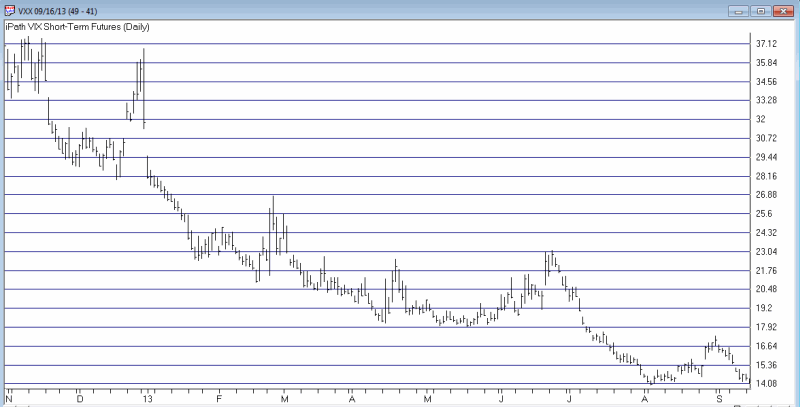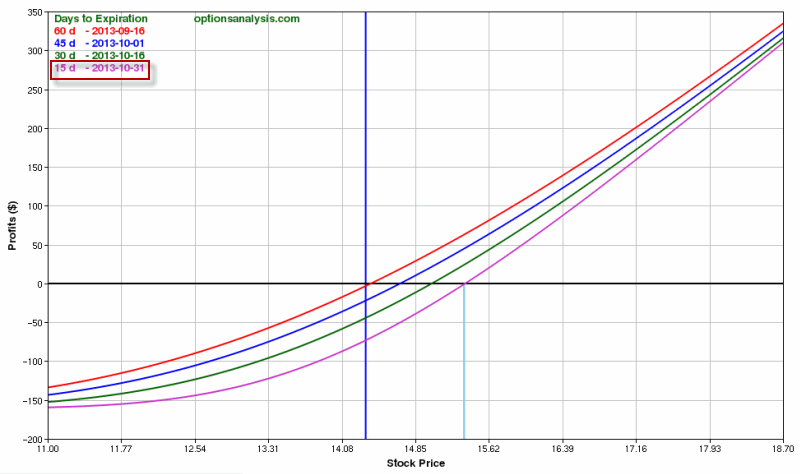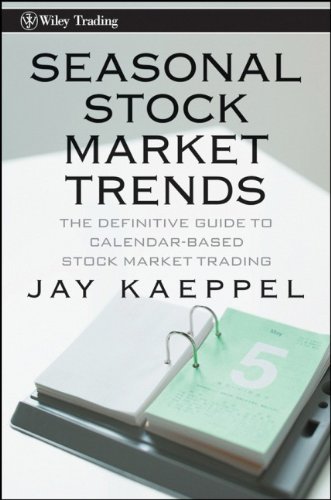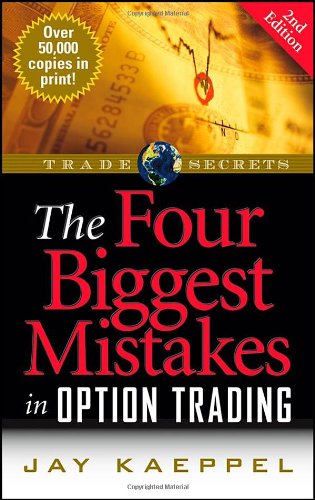Well according to reports that I have read, we are a little over a week away from Financial Armageddon, or at least that is what we are told will unfold if Congress does not raise the debt limit by October 17th. For if the debt limit is not raised by that time then the Fed will be unable to pay its bills (the 17 trillion dollars of debt that we already owe simply represents bills that we are “unwilling” to pay – which apparently is different than bills we are “unable” to pay), which means the U.S. Government may default and that the whole “Full Faith and Credit” thing will suddenly become worth approximately “a bucket of warm spit.” OK, that’s the Bad (granted, Very Bad) News. But there are two pieces of good news.
First, the financial markets are so far taking financial Armageddon pretty darn calmly. Sure the stock market is down a little bit of late, but overall it appears to be doing its best Alfred E. Nuemann (“What, Me Worry?”) impersonation. As a side note, I can’t quite figure out what the “Flight to Quality” crowd will do once the treasury defaults. I can’t help but think that half of them will buy treasury bonds anyway just as a reflex and because they don’t know what else to do (Old dogs, new tricks, if you get my drift).
The other piece of good news is that our elected politicians are “hard at work” attempting to solve this problem (Granted our elected officials appear to have a “slightly” different definition of “Hard at Work” than the rest of us shlubs). Whatever else you can say about them, our politicians are definitely busy engaging in politics these days. Nothing that will do any of us any good, granted, but hey, this whole “We the People” thing is getting just about as outdated as that whole “Full Faith and Credit” thing. So perhaps they are simply planning to wipe out both of these “antiquated” concepts in one fell swoop (at least that’s the only explanation that comes to mind).
When I think of our president and Congress I keep envisioning that image of those guys playing poker in the lounge of the Titanic. Sitting there at a 45 (and ever increasing) degree angle, they remain focused on what they considered to be the most important thing – “Hey, I think I can win this hand!”
Of course as we all know, all of this is completely and entirely the fault of [your least favorite political party here]. And no one can tell anyone otherwise.
What to Do, What to Do
Needless to say, everyone is pretty much assuming that something will happen at the 11th hour that will allow us to avoid “Shock and Awe, and Not in a Good Way” to our economy. Otherwise there might be just a tad more concern being reflected in the financial markets. Still it might be wise to think things through just a bit and to avoid “the conditioned response.”
Some of you may recall the utter “fear and loathing” that preceded the heavily anticipated “Fiscal Cliff” that we were going to plunge off of on January 1st of 2013. How did that work out? With a 20%+ gain in the stock market in the ensuing 8 months, of course. So there is a certain part of us that is now conditioned to believe that “potentially economically catastrophic events” lead to “above average returns”, which I am not entirely sure is the proper lesson. If nothing else, it’s a pretty small sample size.
So should investors simply take solace and assume that “things will work out?” Or is some sort of “defensive action” in order? At this point I think it is wise to invoke that age old bit of wisdom that states, “Hope for the Best, Prepare for the Worst.” At this point there are two basic theoretical scenarios:
1. A deal is reached to avoid a U.S. default and stocks bounce and bonds do not collapse.
2. The U.S. does default and stocks and U.S. treasury securities tank.
If you are a typical investor with a typical allocation of your portfolio to stocks then you don’t really need to “do” anything to take advantage of scenario #1. So that was easy.
Scenario #2 is “a little trickier”. There is a school of thought that states (probably accurately) that if the U.S. does default on its debt there will be far bigger problems than your stock portfolio. And that may be true. But in this worst case scenario it is not like the stock market will close down for good, the economy will (immediately) grind to a halt and we will all begin just “living off the land.” So “just in case”, it might make sense to “hedge.”
One Possibility
As I have written about recently, my new favorite hedging tool (for hedging specifically against an adverse move in the stock market) are call options on ticker VXX, the exchange-traded fund that ostensibly tracks futures contracts on the VIX Index.
The bottom line is simple to understand:
-When the stock market goes down, the VIX Index goes up.
-And the harder the stock market falls, the more quickly the VIX Index “spikes”.
So if you have concerns about a stock market decline then a cheap VXX call option can offer some pretty good upside potential. A trade that I highlighted recently involving VXX call options appears in Figures 1 and 2. (http://jayonthemarkets.com/2013/09/17/looking-to-vxx-just-in-case/)
 Figure 1 – VXX Nov 14 Call Option (courtesty www.OptionsAnalysis.com)
Figure 1 – VXX Nov 14 Call Option (courtesty www.OptionsAnalysis.com)
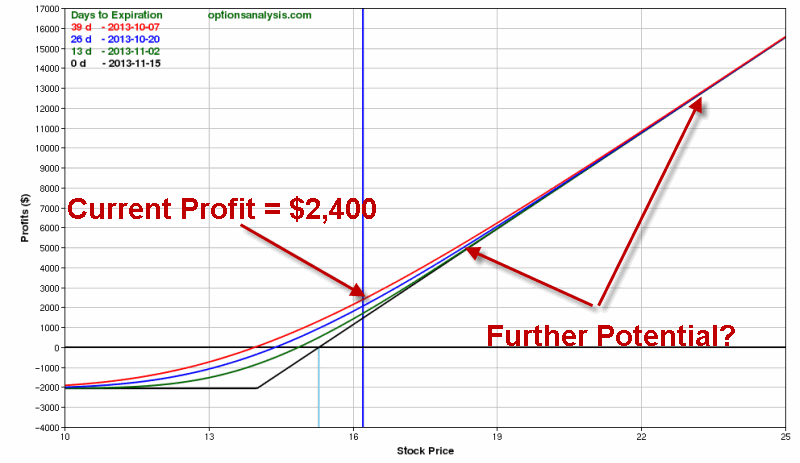 Figure 2 – VXX Nov 14 Call Option Risk Curves (courtesty www.OptionsAnalysis.com)
Figure 2 – VXX Nov 14 Call Option Risk Curves (courtesty www.OptionsAnalysis.com)
As you can see in Figure 3, VXX has rallied from 13.84 to 16.21, or +17%. In the same time the VXX call option shown in Figures 1 and 2 have advanced +116%. This clearly illustrates the potential benefit of leverage in the options market. 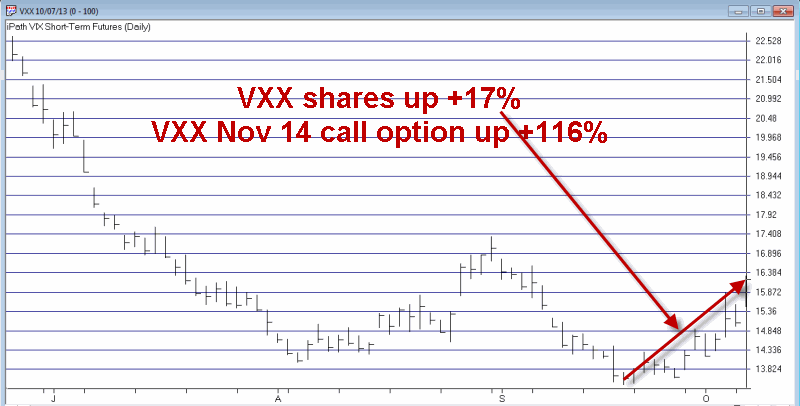 Figure 3 – Ticker VXX (exchange=traded fund) bounces recently (courtesty AIQ TradingExpert)
Figure 3 – Ticker VXX (exchange=traded fund) bounces recently (courtesty AIQ TradingExpert)
How high could VXX go if the U.S. somehow manages to default? Figure 4 displays the longer-term history of the VIX Index itself. 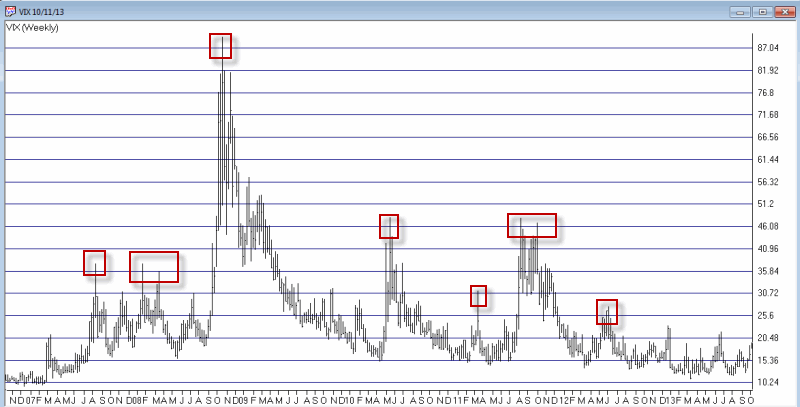 Figure 4 – The VIX Index; How High Can it Go? (courtesty AIQ TradingExpert)
Figure 4 – The VIX Index; How High Can it Go? (courtesty AIQ TradingExpert)
Just to “go to extremes”, if we had another meltdown along the line of 2008 and if ticker VXX rallied to 80, the November 14 VXX call option would be worth $66 a contract, or a gain of about +5,000% from the initial price on 9/20 (about +2,265% from current levels).
The Irony
The ironic part is that as exciting as a potential gain of 2,000 to 5,000% sounds, we absolutely, positively hope that it doesn’t happen. In fact, in the overall best case scenario these VXX call options expire worthless as the stock market rallies and volatility subsides.
What we hope is that our esteemed elected officials will get their act together and come up with a solid long-term plan to put the U.S. back on solid financial footing.
Or at the very least, that they avoid making us Thelma to their Louise.
Jay Kaeppel
Announcing New Video Release: “How to Find Longer-Term Bull Call Spreads”
http://jayonthemarkets.com/new-video-course/




